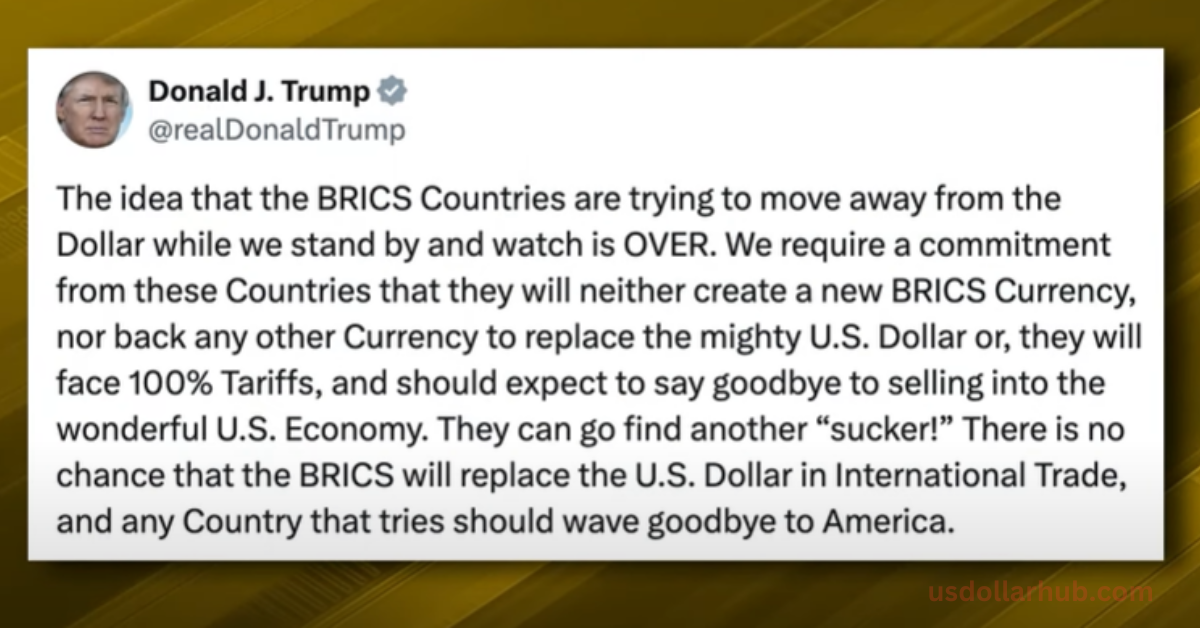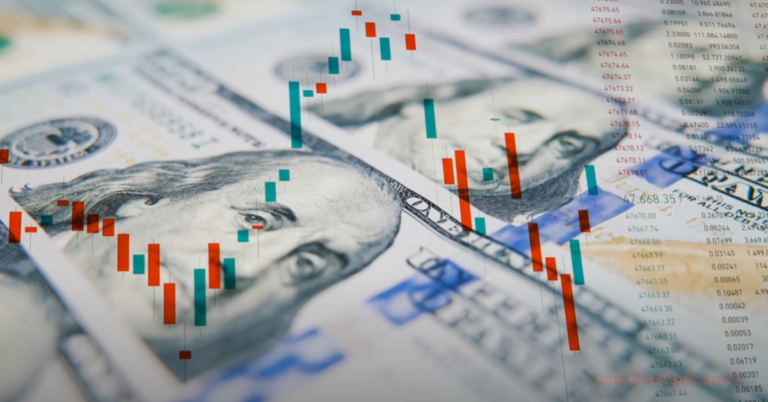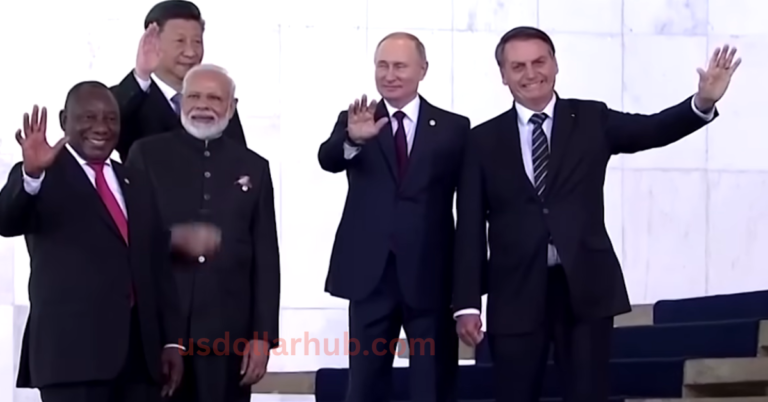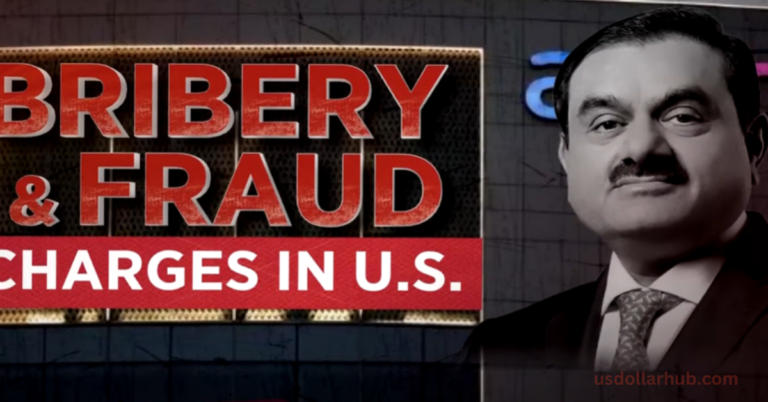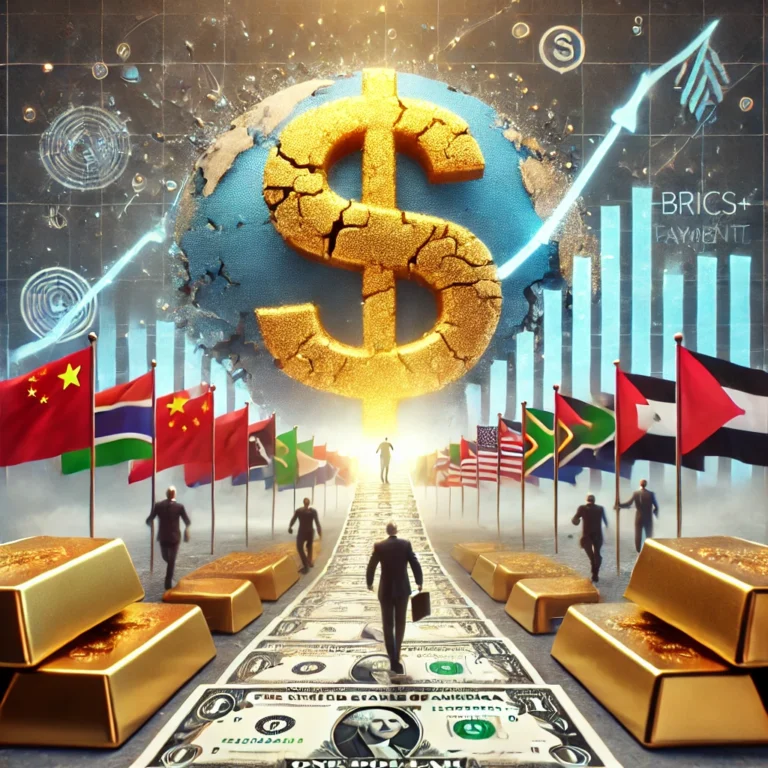Trump tariff :Why Trump Threatened Tariffs Against BRICS Nations -2025
Trump tariff threats against BRICS
President-elect Donald Trump’s recent tariff threats against BRICS nations have sparked significant discussion about their implications for the U.S. dollar and global currency dynamics. This blog explores the background, motives, and potential consequences of these developments, emphasizing how they could shape the future of the U.S. dollar.
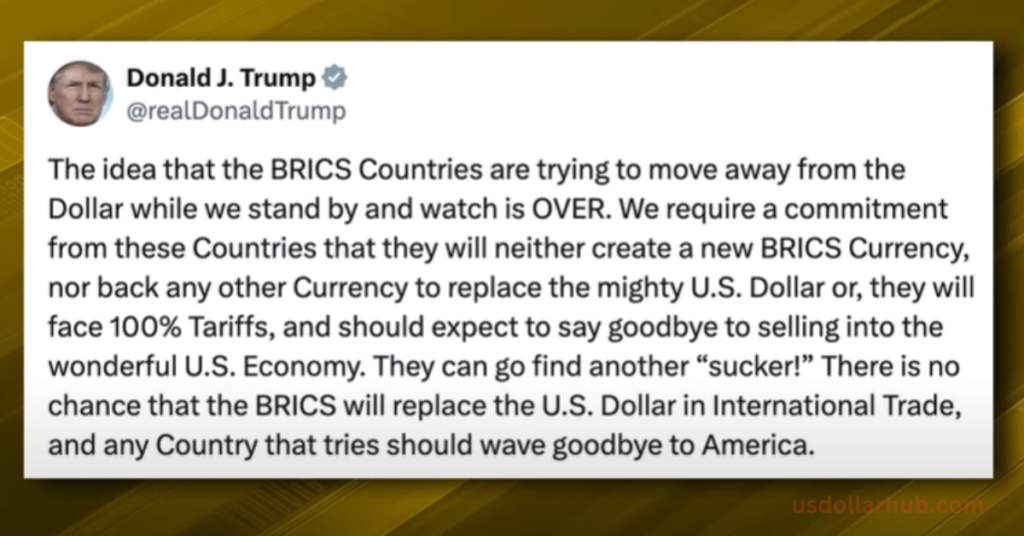
Understanding BRICS Pay and Its Implications
BRICS Pay, an innovative payment platform, is a collaborative initiative by a group of BRICS nations—Brazil, Russia, India, China, and South Africa. This platform aims to bypass the reliance on the U.S. dollar by facilitating direct transactions in local currencies, powered by blockchain and traditional banking systems.
For example, an Indian buyer can pay in rupees for a product from Russia, where the seller receives the payment in rubles. This system effectively eliminates the dollar from these transactions, challenging its global dominance.
Trump’s Tariff Threats: A Protective Stance for the Dollar
Donald Trump’s 100% tariff threat against BRICS nations reflects his longstanding commitment to protecting the U.S. dollar as the world’s reserve currency.
Trump has consistently highlighted the importance of the greenback, describing himself as a “dollar warrior.” His tariff proposal aims to prevent initiatives like BRICS Pay and other de-dollarization strategies that could undermine the dollar’s role in international trade.
Is a BRICS Currency a Real Threat?
One speculative idea gaining traction is the concept of a unified BRICS currency, similar to the Euro. However, experts remain skeptical about its feasibility:
- No Formal Proposal: A BRICS currency is still a conceptual notion, with no concrete framework in place.
- Challenges in Implementation: Establishing a unified currency across diverse economies with differing monetary policies is complex.
- Uncertain Effectiveness: Even if implemented, its ability to rival the U.S. dollar remains doubtful.
BRICS Pay: A Game-Changer or a Passing Trend?
While the BRICS currency idea faces hurdles, the BRICS Pay platform is already operational, potentially posing a real challenge to dollar dominance. Its blockchain-based infrastructure allows seamless cross-border transactions, reducing the reliance on the dollar for trade between member nations.
However, skepticism persists regarding its scalability and adoption, especially given the dollar’s entrenched role in global finance.
The Broader Implications of Trump’s Actions
Trump’s tariff threats against BRICS nations align with his broader agenda to secure the U.S. dollar’s position as the dominant global currency. However, they also highlight deeper geopolitical shifts:
- West vs. East Divergence: The world appears to be dividing into two economic blocs, with Western nations aligning around the dollar and Eastern nations exploring alternatives.
- Global De-Dollarization Trends: As countries seek to reduce dependence on the dollar, initiatives like BRICS Pay could gain momentum, potentially reshaping global trade dynamics.
FAQs About Trump’s Tariff Threats and BRICS
What is BRICS Pay?
BRICS Pay is a payment platform enabling direct transactions in local currencies between BRICS nations, bypassing the U.S. dollar.
Why did Trump threaten tariffs against BRICS nations?
Trump aims to protect the U.S. dollar’s global dominance and counter de-dollarization trends.
What is de-dollarization?
De-dollarization refers to efforts by countries to reduce their reliance on the U.S. dollar for trade and reserves.
Is a BRICS currency a real possibility?
While discussed, a BRICS currency faces significant challenges and remains a speculative idea.
How does BRICS Pay work?
It uses blockchain and traditional banking to facilitate cross-border transactions in local currencies.
What are the potential impacts of Trump’s tariffs?
Tariffs could spark negotiations but also increase economic tensions with BRICS nations.
How does Trump’s stance align with his previous policies?
Trump has consistently advocated for maintaining the dollar as the world’s reserve currency.
What are the challenges of de-dollarization?
The dollar’s deep integration into global finance makes reducing reliance difficult for most nations.
How does BRICS Pay affect global trade?
It provides an alternative to dollar-based trade, potentially shifting trade dynamics among member nations.
What’s the future of the U.S. dollar?
Despite challenges, the dollar remains dominant due to its widespread use and trusted status.
Disclaimer
This article is for informational purposes only and does not constitute financial or investment advice. for more visit –UsDollarHub.com .
